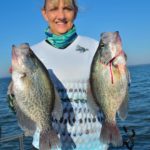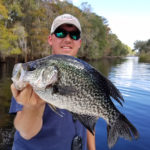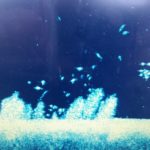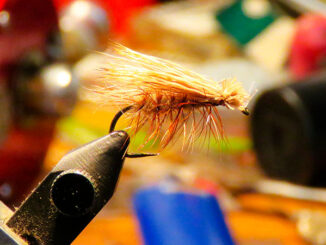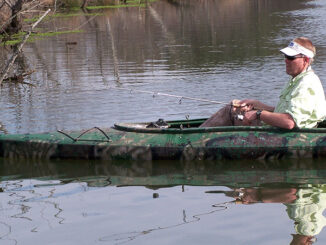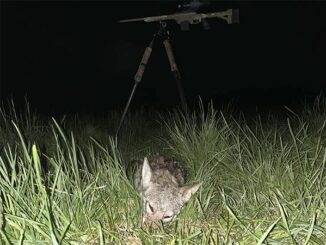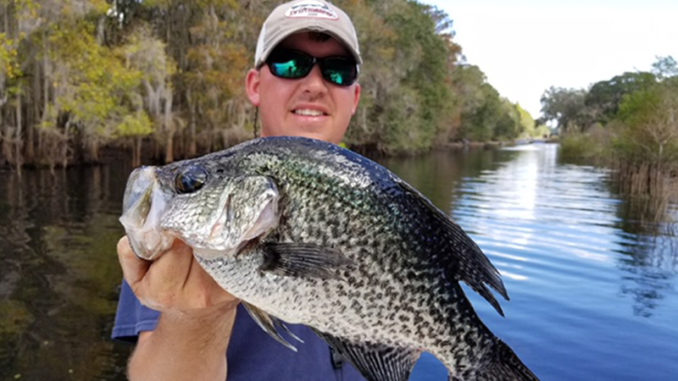
With the crappie spawn in your rearview mirror, it’s time to look deeper, and brush piles are tough to beat, especially to find gangs of nice fish.
Spring brings fishermen into shallow-water jungles to target crappie as the peak of their spawn approaches and arrives. When the show is over, it’s back to targeting other species such as, bass, catfish or copperhead bream.
Crappie are famed as shallow-water performers. But their shoreline appearances only account for a short part of their annual travels. Deep-water brush piles are hot spots for catching summer specks.
No doubt, crappie venture into shallow, wooden cover during the spring to spawn. Anglers can easily spoon-feed jigs and minnows to these speckled beasts in willow tops, laydowns and around lily pad roots. But, the spawn doesn’t last long. And once it’s over, crappie will return to deep water along creek channels and deep brush.
T.C. Lloyd, a tournament crappie fisherman from Hartsville, S.C., catches plenty of slabs around deep brush piles. It’s one of his primary ways to target fish throughout the year.
“We catch crappie on brush year-round, even during the spawning season,” said Lloyd (843-307-6678). “Crappie definitely move into the shallows to spawn during the spring. They will almost completely evacuate these shallow areas by mid-May and return to the deep water.”
Find the deep brush, and you’ll find the crappie
Lloyd fishes for crappie competitively all over the southeast. In six years, he has won several tournaments and has had dozens of top-10 finishes. When he arrives at a new lake or a place he hasn’t fished recently, he knows he must quickly learn and dissect the waters to catch fish.
“The spawn can be one of the toughest times to consistently find fish, because they are constantly on the move. But deep brush will always hold fish, even during the spring. They get stacked on brush,” he said.
Regardless of the time of year, Lloyd can launch his boat at a new lake and start catching fish on deep brush. When the spawn is over, deep brush holds large groups of fish that can make the post-spawn bite off the charts.
Lloyd said some brush is better than others when it comes to holding fish. He looks for brush that’s close to changes in the bottom near deep water.
“I like brush in 15 to 25 feet of water on an underwater hump or right on the shallow side of a ledge,” he said. That’s where the brush can provide a refuge for bait and a haven for schooling slabs.
Electronics are essential to finding the brush
Lloyd uses his two Lowrance HDS units to scan the bottom and find submerged brush around humps and ledges. In addition to showing the structure, the high-definition units will identify schools of fish around it.
“I can ride by with my down-imaging and tell exactly where the fish are on the brush,” he said. “They are usually suspended above the brush or in close vicinity of the brush.”
Lloyd drops a buoy on the brush to mark it and will circle over the top of the structure, using his bow-mounted depth finder.
“When they are feeding, they will eat as soon as you drop down the lines,” he said. “But you need to be quick, because they will spook off after you catch a few or from the shadow cast off the boat.”
Even in deep water, crappie traveling in large schools can be spooked by fishing pressure and boats riding over them. Fortunately, they may not move too far.
“You have to back off the buoy in a 15- to 20-foot radius until you mark them. You can steadily pick up fish as long as they continue to feed,” he said.
Take it slow
Lloyd will often wait out crappie if he believes there are some jumbos on that piece of brush. Or he will move to another patch of brush to find another group of fish. Crappie can be uneasy in large groups, so he will locate multiple brush piles. Then he makes a slow approach to each particular spot.
In addition to making a stealthy approach, Lloyd utilizes an array of four to six 14-foot crappie poles from the bow of his boat.
“Crappie are spooky, and you don’t want to make shadows over the fish. The long poles allow me to get the baits way out in front of the boat,” he said.
Lloyd’s summer crappie rigs are simple. He drops down live minnows attached to a basic Carolina rig with a ¼-ounce egg sinker and an Eagle Claw 214 light-wire hook. He likes the light wire hook around brush because they are easy to recover when snagged.
“The light-wire hooks will straighten just enough to get out of the brush pile without breaking. And you can bend the hooks right back to shape,” he said.
Lloyd routinely uses small jigs tipped with minnows, but live minnows on a bare hook are his go-to baits for hooking up with a trophy slab. Anglers should understand that, while the spawn is far in the past as June arrives, there are plenty of big fish hanging around in deeper areas to fill plenty of coolers.
Click here if you’ve got catfish on your mind.

